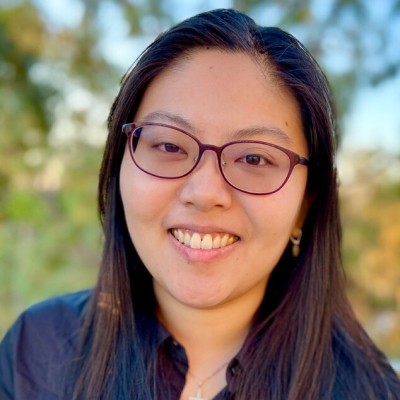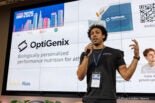The decision to grow program enrollment can feel daunting, and yet evaluating the process systematically can unlock unexpected growth opportunities that can make aggressive enrollment goals feasible. This is exactly what happened when Nicole Lim, Portfolio Coordinator at UCLA Extension’s Engineering Department, turned to prompt engineering with ChatGPT to help her team rethink how they communicated program value – ensuring their messaging resonated with the real goals and motivations of their target customer – engineering professionals. Focusing on two of UCLA Extension’s flagship programs—Analog Circuit Design and Technical Management, she used ChatGPT prompting to uncover market insights that deepened engagement and supported more students in staying on track through graduation. This was a deliberate and strategic use of technology, aimed at aligning each program more closely with the career ambitions and real-world needs of their customers – engineers and other technical professionals.
This pilot project was selected as part of the UCLA “Call for OpenAI Project Proposals” and received ChatGPT Enterprise licenses, along with in-kind support from the AI Innovation Initiative led by UCLA Digital & Technology Solutions.
Nicole Lim, portfolio coordinator, UCLA Extension, UC Tech Talk, in conversation with Laurel Skurko, UC Office of the President. Listen to the full podcast, with captions on YouTube.
Early Outcomes from UCLA’s ChatGPT Adoption
As UCLA became the first university in California to adopt ChatGPT Enterprise, Lim’s project stood out as one of the earliest applications of this new technoology. It demonstrated how generative AI could support key marketing and program management objectivessuch as: (1) refining the “value proposition” (how the team described their product to their customers in a way that matched the customers’ needs); (2) program engagement (how many customers read the content in-depth; and, (3) ultimately, improving student outcomes such as program graduation rates.
Rather than relying on past or conventional outreach methods, Lim led a cross-functional effort grounded in a systematic evaluation process with the support of artificial intelligence. Using prompts and interacting with ChatGPT through collaborative testing, iteration and integration, the team surfaced insights, validated them, and then reshaped how the program connected with prospective students.
This wasn’t just a data-driven decision and a simple query. It was based on a process of prompting ChatGPT, interpreting its responses, and testing those ideas collaboratively based on the prior experiences of a diverse and cross-functional team. This process led to a breakthrough concept and resulted in astounding results. By using this iterative approach, the team uncovered additional customer insights and specific needs that they could address in a systematic way.
Using these insights, Nicole Lim and her team achieved some of the following results:
- They raised the graduation rate of the Analog Circuit Design Program from 80% to 96%.
- Earlier enrollments (students opting to enroll earlier in the season)
- Deeper, long-term partnerships formed through the Technical Management Program. For example, many students committed to the full six-course sequence and completed the Analog Circuit Design Program, while satisfied learners in the Technical Management Program referred colleagues into future cohorts.
- For many, program completion became a launching point for continued learning—creating a ripple effect that deepened trust in the institution and showcased the power of a well-aligned, student-driven experience.
The process – a new approach to the use of AI at work
But it wasn’t the result that mattered most, it was how they got there—and the fact that the project has changed the way the team uses AI to support their work. Lim’s first step was exploring how ChatGPT could help them think differently about marketing and outreach. Rather than plugging in a prompt and taking the first answer, she and her team approached the tool like a thought partner.
I asked it really important questions like, ‘How should we strategize and refine our value proposition and support business development?’ and ‘What is the source of this information, what formula generated this prompt?‘
Unpacking AI as a Team – Creating a Continuous Feedback Loop
But the insights didn’t come from AI alone — they came from what the team chose to do with it. Each team member generated prompts independently and brought the results to group discussions. “We would all go write prompts in ChatGPT, show the outcome and analysis, and then we discuss those outcomes within our team and select which ones to adopt,” Lim explained. This iterative back-and-forth became the foundation of their planning — a continuous feedback loop between AI suggestions and human judgment.
Building a Collaborative and Ethical Culture Around AI
Throughout the project, collaboration remained central. Lim relied on visual workboards to organize priorities and invited the team to choose which tasks matched their strengths. She also credits the BruinTech community with helping her design the project framework and set a clear timeline for execution.
Responsible AI use was a constant priority. “The main priority is AI literacy,” Lim noted. “Knowing that there could be some errors in the outputs, or knowing that there could be some bias in it that could affect the outcome.” Her team avoided using any student data and referred to companies only in broad terms, ensuring privacy was protected.
Creating Time for AI Adoption – or Not
The process of AI adoption was not immediate either. For example, Lim shared that her supervisor was initially unsure how ChatGPT could help—until it saved her hours on a repetitive task.
She didn’t see how it could help her workload, until she used it for organizing data in an Excel sheet… Instead of spending two hours on it, she just spent 15 minutes fixing it.
Where was the AI of Most Value – Better Questions
Lim emphasized that AI didn’t hand them a roadmap — it simply helped them reflect more deeply on their approach.
ChatGPT didn’t give us the final answer…It just helped us ask better questions.
Her story demonstrates that success is not found in the tool alone, but in how a team uses it: thoughtfully, collaboratively, and with a clear commitment to improving the experience for every learner involved.
Related Reading
- June 30, 2025: NEWS: UC Tech Awards 2025 showcase courage and boldness in transforming technology across the UC System
- April 1, 2025: UC Tech Awards Application for AI Impact: “Utilizing OpenAI for Customizing Engineering Programs at UCLA Extension”
- RESOURCE: About the Annual UC Tech Awards Program
Contact

Project Managment Professional
UCLA Extension
Author

Digital Design & Content Intern
UC Office of the President







